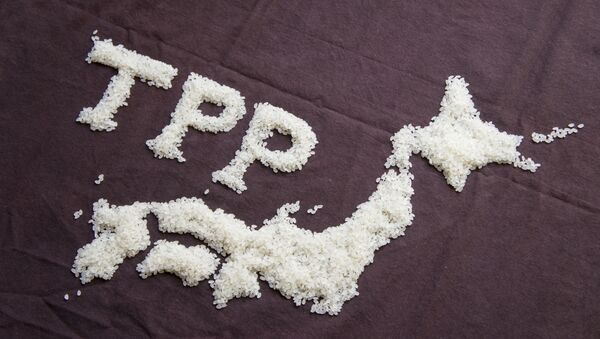MOSCOW (Sputnik) — The TPP provides for the creation of a free trade zone in the Asia Pacific region. Together, the TPP members, including the United States, accounted for nearly 40 percent of global GDP and a third of global trade.
Initially, there were 12 signatory countries to the Partnership: the United States, Canada and Mexico in North America; Peru and Chile in South America; Japan, Malaysia, Brunei, Singapore and Vietnam in Asia, as well as Australia and New Zealand.
Taiwan, Colombia, the Philippines and South Korea have officially announced their interest in joining the deal.
The agreement was initiated by the United States, which was concerned by the decrease of its influence on the economy and policies of the Asia-Pacific countries and the strengthening of China’s economic and political positions in the region.
The document provides for lifting of customs duties, standardizing sanitary and phytosanitary measures, and adopting a common policy on intellectual property, government procurement and competition.
Taxes on over 18,000 products are to be lifted under the TPP.
The member countries have agreed to facilitate trade cooperation in the area of intellectual property of biological and pharmaceutical products, vehicle assembly and dairy trade.
Several chapters of the agreement partially open up and standardize labor markets for the TPP signatories, and also regulate environmental impact, digital trade and trade in services.
According to the Peterson Institute for International Economics (US), the TPP will boost the real incomes of its member countries by $285 billion and exports by $440 billion over baseline projections by 2025. Japan and the United States will account for 64 percent of the total GDP gains.
Former US president Barack Obama viewed the TPP as a potential legacy-defining achievement of his presidency. However, he failed to convince the Congress to ratify the trade deal with Asian countries.
The ratification of the TPP Agreement has become one of the most disputed issues of the US presidential race. US Republican presidential nominee Trump and former Democratic Party candidate Bernie Sanders both said the agreement is unacceptable and potentially damaging to US business interests. Many members of Congress agreed, and there were opponents of the TPP both among Republicans and Democrats. Democratic presidential candidate Hillary Clinton did not express explicit support for the TPP, but neither did she say she would oppose it.
Russia, which is not a member of the TPP either, believes that the TPP agreement is a questionable document because it was negotiated and signed behind closed doors. In his address at the 70th UN General Assembly on September 28, 2015, President Vladimir Putin described the TPP as "one more sign of [US] rising economic selfishness" and expressed concern over the creation of "exclusive economic associations" in which the WTO would have no say and which are fraught with unbalancing global trade.
Experts believe that the TPP hampers multilateral consultations within the WTO by shifting them to a regional platform.



